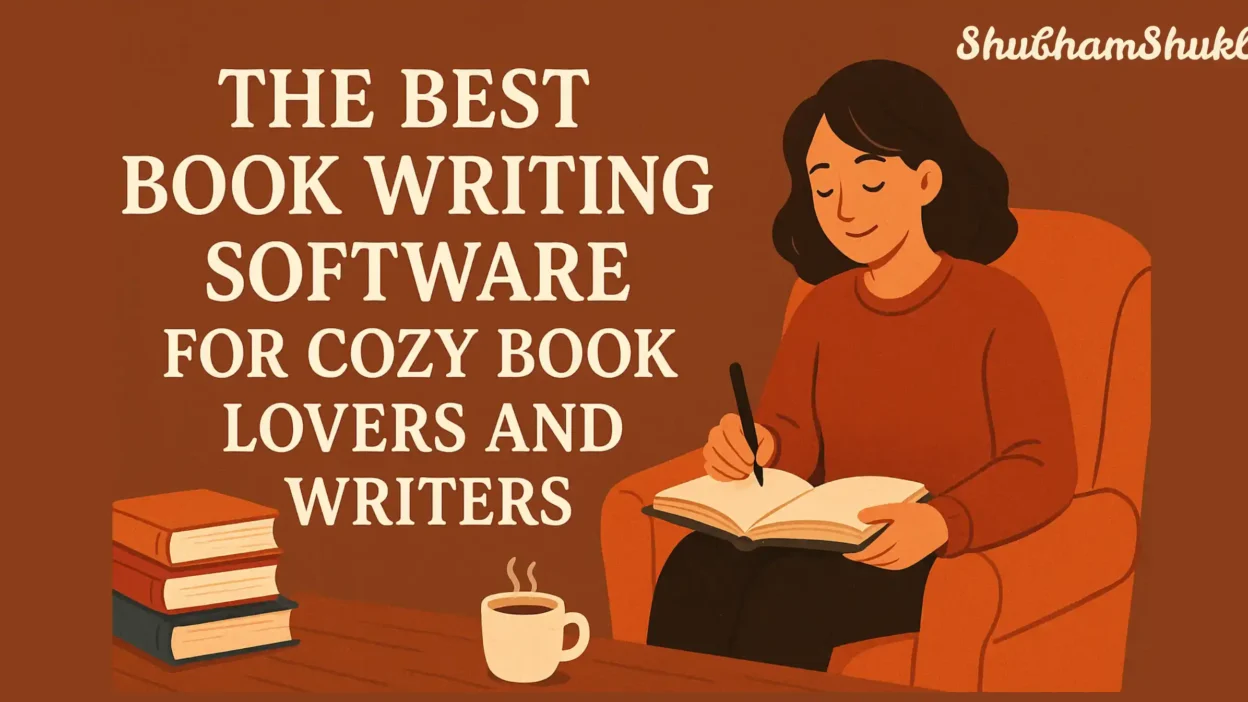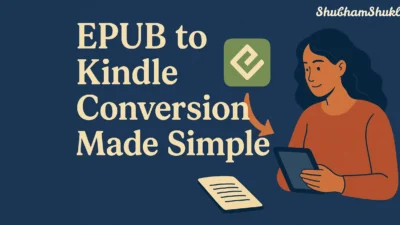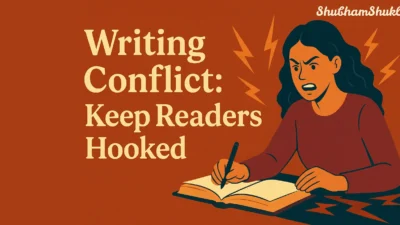- Why You Might Need Specialized Book Writing Tools
- Top Picks: Tools That Writers Actually Love
- Other Worthy Tools to Consider
- How to Choose the Best Book Writing Software
- A Real Moment in a Writer’s Life
- Addressing Common Challenges
- The Heart of This Decision: Your Writing Voice Matters Most
- FAQ — Quick Answers on Writing Software
- Wrapping Up — Your Next Step Toward Finishing That Novel
If you’ve ever stared at a blank page, flicking between Word, Scrivener, and notebooks, wondering which is the real tool for writing a novel—you’re not alone. Finding the best book writing software can feel like choosing your favorite pen: personal, slightly intimidating, and deeply tied to how you work.But here’s the truth: the right software isn’t magical.
It’s just a helpful companion, helping you stay organized, focused, and a little happier during your writing journey. Let’s walk through what makes a writing tool great, some top options for novelists, and how to pick one that suits you.
You may also like: How to Outline a Novel Plot (Without Killing Your Creativity)
Why You Might Need Specialized Book Writing Tools
When I first drafted my debut novel, I used Google Docs. Great for collaboration, sure—but juggling nested folders, chapter order changes, and character notes got messy quickly. I remember one afternoon tearing my hair out because I misordered chapters again. That’s when real writing tools started looking appealing.
The best book writing software offers features that Word or Docs simply don’t—like corkboards to rearrange scenes, metadata trackers for characters, and easy exports to eBook formats. If you’ve ever lost track of a subplot or accidentally deleted an important note, you’ll know what I mean.
Software like Scrivener, LivingWriter, and Dabble are built for writers, by writers. They anticipate the chaos of drafting a novel and give you a structure that feels flexible, not suffocating.
Top Picks: Tools That Writers Actually Love
Scrivener — the tried-and-true classic
Many writers swear by Scrivener—and for good reason. Its binder system lets you break your manuscript into scenes, chapters, or sections and reorder them effortlessly. You can stash research, character sketches, and draft snippets all in one place.
I once used Scrivener’s split-screen to revise a scene while referencing earlier dialogue—it saved me from inconsistent character voices and made editing feel smooth instead of scattered.
LivingWriter — elegant, cloud-based simplicity
LivingWriter feels modern and clean, like typing on a minimalist digital typewriter. It includes templates for story arcs, beat sheets, and character cards—perfect if you like a little guidance but don’t want to design your own system from scratch. I used LivingWriter during a rainy retreat in Vermont, and I loved how my chapters synced automatically across devices—no fear of losing my work if the power went out.
Dabble — for authors who hate clutter
If Scrivener feels like too much, Dabble offers a streamlined interface that won’t overwhelm. It includes goal tracking, plotting grids, and drag-and-drop scene reordering. Ideal if you’re goal-oriented but want to keep things minimalist.
I once wrote a 50K word draft mostly on Dabble, using its word‑count goal widget like a friendly nag—helpful, not pushy.These three tools consistently appear in discussions about the best book writing software, especially among fiction writers.
Each approaches organization slightly differently, but they all reduce friction so you can focus on storytelling.
You may also read: Linear vs Nonlinear Storytelling Examples: Which Style Tells the Stronger Story?
Other Worthy Tools to Consider
Even if these tools aren’t your main pick, they deserve a mention:
- Ulysses: great for Mac users who love Markdown and distraction‑free writing.
- Google Docs + Templates: offers real-time collaboration and flexibility, though it needs manual organization.
- Microsoft Word with Novel Templates: familiar to many, especially if you’re used to formatting with styles and reference options.
Choose what complements your workflow. If you plan long drafts offline, Scrivener or Ulysses might suit you. If you’re always on the go or writing with a partner, LivingWriter or Docs could be faster to access.
How to Choose the Best Book Writing Software
- Think about your writing process
Do you outline first or dive in with chaos and write your way to coherence? If you like freeform writing, tools with easy reordering like Scrivener or Dabble might click. If you plan first, LivingWriter or outlining-heavy tools might help. - Test the free trials
Most tools offer trial periods—import a chapter or two and play around. Notice if exporting creates huge formatting issues or if your scene organization feels intuitive. - Consider your budget & device ecosystem
Scrivener is a one-time purchase with free updates; LivingWriter and others are subscriptions. Also check if you need offline access. That matters especially when you’re traveling or writing from digital detox zones. - Ask yourself: what helps you stay creative?
- Does seeing character cards energize you? That tool probably aligns with your brain. Do you draft better in one clean space without distraction? Choose whichever lets your creativity breathe.
You may also like: Is the Antagonist the Bad Guy? Let’s Talk About It
A Real Moment in a Writer’s Life
“In my own experience, I found that…” setting writing goals within Dabble helped me finish my first rough draft during Nanowrimo. I was two chapters behind half-way through November and felt panicked.
So each morning, I opened Dabble, typed in my daily target, and wrote—even if just a few lines. Those small daily goals gave me momentum, and by the end of the month, I hit 50K.
It wasn’t perfection, but it was momentum. That’s the kind of subtle support good writing software should offer: a gentle push, structure without rigidity.
Addressing Common Challenges
- Exporting glitches: Some tools may botch EPUB or PDF exports. Test early so you can troubleshoot formatting before uploading anywhere.
- Feature overload: A tool with too many bells and whistles can overwhelm. If a dashboard’s too cluttered, explore a simpler setting or a lighter interface.
- Sync issues: Cloud tools may have delays or conflicts. Regular backups (like exporting your manuscript) protect your work—and your peace of mind.
The Heart of This Decision: Your Writing Voice Matters Most
At the end of the day, software is just a vessel. The real magic comes from your stories, your voice. The best book writing software isn’t the most expensive, or the flashiest—it’s the one that fades into the background so your writing can shine.
Whether you draft in Markdown with Ulysses, shuffle chapters in Scrivener, or write bubble scenes in LivingWriter, the goal is simple: reduce friction for writing. Let the software serve your workflow, not complicate it.
FAQ — Quick Answers on Writing Software
Q: Can I write a novel in Google Docs?
Yes! Many writers do. Docs offers real-time collaboration and easy access—but it lacks novel-specific tools like scene reordering or character tracking.
Q: Which software is best if I’m new to writing tools?
Try LivingWriter or Dabble. Their clean layouts and built in templates are beginner-friendly without overwhelming features.
Q: Can I switch tools mid-project?
Mostly yes—if your files export/import cleanly. Some tools export in universal formats like Word or Markdown. Just be cautious about losing metadata or formatting.
Q: Are free trials worth it?
Definitely. Import a sample chapter to each tool and see which feels natural. You don’t want to commit to a year-long subscription if the software slows you down.
Wrapping Up — Your Next Step Toward Finishing That Novel
Choosing the best book writing software is about matching tool and temperament—finding that sweet spot between structure and joy, between order and creativity. Whether you’re chasing plot threads, drafting scenes, or planning your next book review, the right tool can keep you grounded and productive.
At the end of the day, the words matter more than the software. But having a trusted digital notebook, roadmap, or editing hub? That’s like having a writing friend in your corner. One that’s always quiet when you just need to write—and gently supportive when you stumble. Let that partnership help you bring your story to life.



